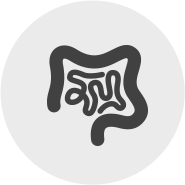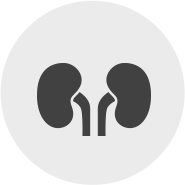Genetic
Testing
Diagnosis of Alagille syndrome can be challenging due to variable presentation of the clinical manifestations, which may vary even among individuals from the same family sharing the same mutation.2 This lack of a genotype-phenotype correlation—or lack of a strong correlation between mutation type, clinical presentation, and severity—also complicates diagnosis.1,3,5
The clinical diversity and the fact that bile duct paucity and cholestasis can occur in many other diseases may result in the under- or misdiagnosis of Alagille syndrome; molecular genetic testing, therefore, provides valuable confirmation, especially in milder cases or in diagnosis of extended family.1,6
Molecular genetic testing approaches can include a combination of gene-targeted testing (serial single-gene testing, multigene panel) and comprehensive genomic testing (exome sequencing, exome array, genome sequencing), depending on the phenotype.5
Gene-Targeted Testing
When the phenotypic and laboratory findings suggest the diagnosis of Alagille syndrome, individuals are likely to be diagnosed using molecular genetic testing, which can include serial single-gene testing or use of a multigene panel5:
- Serial single-gene testing is where analysis for pathogenic variants for the JAG1 gene is first performed. If no variants are identified and there is strong clinical suspicion of Alagille syndrome diagnosis, then NOTCH2 molecular genetic testing is performed
- A multigene panel covers JAG1, NOTCH2, and other genes of interest at once in order to identify the genetic cause of the condition at a reasonable cost while limiting identification of variants of uncertain significance (VUS) and pathogenic variants in genes that do not explain the underlying phenotype
Comprehensive Genomic Testing
When the diagnosis of Alagille syndrome is suspected, but an individual does not meet the clinical diagnostic criteria, comprehensive genomic testing—which does not require the identification of the gene(s) likely involved—is the best option. Exome sequencing is most commonly used; genome sequencing is also possible. Although fewer patients have been reported to have pathogenic NOTCH2 variants, those who do have a lower prevalence of cardiac, vertebral, and facial abnormalities than those with pathogenic JAG1 variants.5
For more information about genetic testing and/or to get started, visit Travere Therapeutics, Inc.















